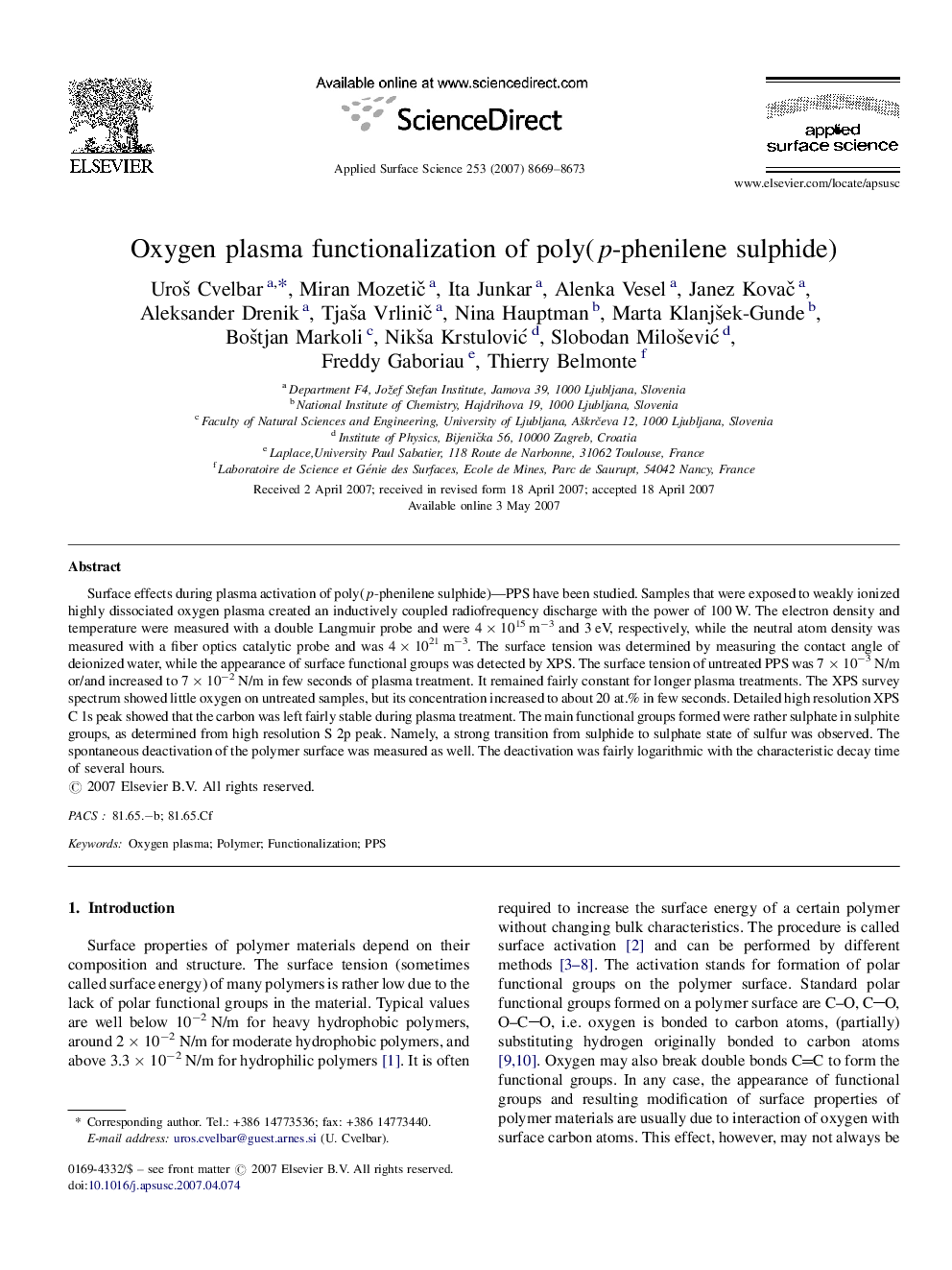| Article ID | Journal | Published Year | Pages | File Type |
|---|---|---|---|---|
| 5364033 | Applied Surface Science | 2007 | 5 Pages |
Abstract
Surface effects during plasma activation of poly(p-phenilene sulphide)-PPS have been studied. Samples that were exposed to weakly ionized highly dissociated oxygen plasma created an inductively coupled radiofrequency discharge with the power of 100Â W. The electron density and temperature were measured with a double Langmuir probe and were 4Â ÃÂ 1015Â mâ3 and 3Â eV, respectively, while the neutral atom density was measured with a fiber optics catalytic probe and was 4Â ÃÂ 1021Â mâ3. The surface tension was determined by measuring the contact angle of deionized water, while the appearance of surface functional groups was detected by XPS. The surface tension of untreated PPS was 7Â ÃÂ 10â3Â N/m or/and increased to 7Â ÃÂ 10â2Â N/m in few seconds of plasma treatment. It remained fairly constant for longer plasma treatments. The XPS survey spectrum showed little oxygen on untreated samples, but its concentration increased to about 20Â at.% in few seconds. Detailed high resolution XPS C 1s peak showed that the carbon was left fairly stable during plasma treatment. The main functional groups formed were rather sulphate in sulphite groups, as determined from high resolution S 2p peak. Namely, a strong transition from sulphide to sulphate state of sulfur was observed. The spontaneous deactivation of the polymer surface was measured as well. The deactivation was fairly logarithmic with the characteristic decay time of several hours.
Related Topics
Physical Sciences and Engineering
Chemistry
Physical and Theoretical Chemistry
Authors
UroÅ¡ Cvelbar, Miran MozetiÄ, Ita Junkar, Alenka Vesel, Janez KovaÄ, Aleksander Drenik, TjaÅ¡a VrliniÄ, Nina Hauptman, Marta KlanjÅ¡ek-Gunde, BoÅ¡tjan Markoli, NikÅ¡a KrstuloviÄ, Slobodan MiloÅ¡eviÄ, Freddy Gaboriau, Thierry Belmonte,
